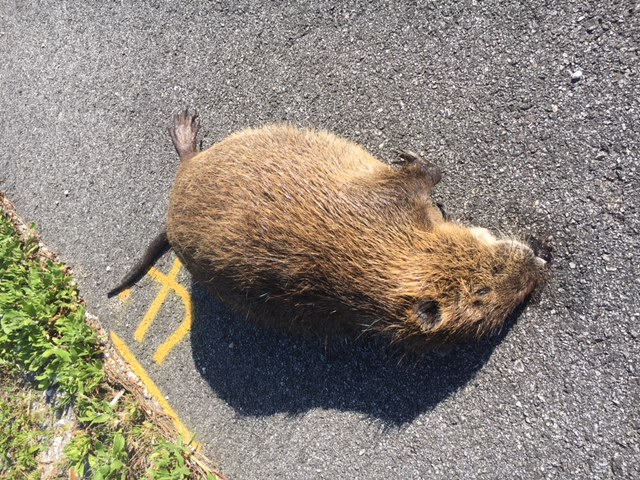
by Rick O'Connor | Jun 28, 2019
I found one in Escambia County, near Perdido Key. It was dead, roadkill, and was quite large. Needless to say, working with invasive species and trying to stay ahead of any new potential problems, I was surprised. I immediately turned around to confirm what I saw as I drove by – it was a nutria.
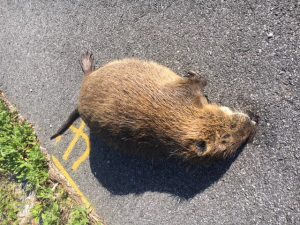
A dead nutria found along a roadside in Escambia County.
Photo: Rick O’Connor
Many of us have heard of this large rodent (Myocastor coypus), and all the problems it has caused in the state of Louisiana. With the loss of their marshes at stake, it was “all hands” to battle this guy. From reading, it appears it was released across the United States as a potential fur product. I found statements that they may have been brought here from their home in South America as early as the 19th century. Certainly, by the 1920s and 1930s they were here. Today there are records in 18 states across the southeast, the Chesapeake Bay area, and the Pacific northwest – a widespread release and distribution.
It is another classic invasive species story. A nonnative creature is brought to the United States for some specific reason, sometimes accidentally; escapes into the local environment, or is intentionally released; has no natural predators so begins to reproduce at a high rate; and causes environmental and/or economic problems. The United States spends hundreds of millions of each year battling such species.
In the nutria’s case, it is from South America. It was hard to determine whether they were brought over here in small increments to different locations over time, or whether they were brought here in bulk and released into habitats they could survive in, but they were released. It is a large rodent and resembles a beaver except that its tail is round, and not flat, and the profile of their back has an arch to it. They can reach two feet in length, not counting tail, and can weigh up to 20 pounds.
They are herbivores, and some used this animal to control aquatic plants in their ponds. Like many rodents, they have an aggressive reproductive rate to overcoming predation. Nutria become sexually mature within 4-6 months and can produce their first litter at eight months. They breed year-round and typically have three litters / year with 2-13 young / litter. Gestation is 128-130 days and the females are ready to breed within 48 hours of birth.
Nutria like water and can survive in brackish conditions. They live in small social groups that typically have a dominant male, 2-3 females, and the young. Activity is usually at night, moving through the habitat consuming 25% of their body weight in plants each day. They can be seen during daylight hours if food is scarce.
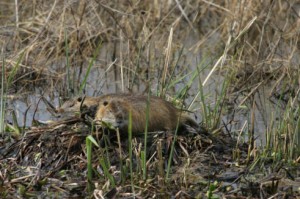
Photo Courtesy of US Fish & Wildlife National Digital Library
So, what’s the problem?
They eat a lot and burrow for denning. Many waterways are endangered due to their destructive habits. The tunneling and burrowing can compromise the integrity of banks and shorelines around these waterways. Louisiana, being a state with many levees holding water back from communities, you can understand their concern; but communities in Washington, Oregon, and Maryland are facing the same issues. They are carries of certain pathogens and parasites, such as tuberculosis, septicemia, and liver flukes which can be a threat to humans and pets. They also carry nematodes which can trigger a condition known as “nutria itch” in waterways where they are found.
In 1938, 20 nutria were released in Louisiana. By 1958 there were 20 million in the state. There did not seem to be any natural control and the state began losing its marshes. The interesting thing is there are records of releases in Florida as far back as 1955. There are records of this animal in the Pensacola area dating back to 1956. Yet, we do not see the overwhelming numbers found in Louisiana, or with lionfish in our area. I spoke with long time Mobile Delta natural historian Jimbo Meador about the problem there. He said there were lots of nutria at one time and they had hunting tournaments to control them. But when the state began protecting alligators the nutria problem went away – a natural predator after all. He said today you can still find nutria in the Mobile area, but they are restricted to the more brackish areas where alligators are not as common.
Which brings us back to the Pensacola issue.
Many believe that the best method for controlling a new potential invasive species is discover and manage them early before they become widespread and established. Even though this is the first one I have seen in Escambia County, they apparently have been in the area for over 60 years. Something seems to be controlling their populations, which is a good thing. That said, any populations found should be monitored so they do not become more widespread. Currently, the Florida Fish and Wildlife Conservation Commission considers them as one of the furbearers and manages them as such. Live trapping is allowed but you must have a trapping permit to do so. You can actually sell the fur, but you will need a license for this. This may be like the tiger shrimp story, an invasive we are aware of but is not becoming a widespread problem in the county, but I do recommend anyone seeing the creature report to the website data base www.EDDMapS.org so that we can all keep track of where they are and whether they are spreading.
References
California’s Invaders: Nutria (Myocastor coypus), California Department of Fish and Wildlife
https://www.wildlife.ca.gov/Conservation/Invasives/Species/Nutria.
Jimbo Meador (personal communication)
Maryland Mammals: Nutria (Mycastor coypus), Maryland Department of Natural Resources
http://dnr.maryland.gov/wildlife/Pages/plants_wildlife/Nutria.aspx.
Nutria Biology and Identification, Chesapeake Bay Nutria Eradication Project, U.S. Fish and Wildlife
https://www.fws.gov/chesapeakenutriaproject/Biology.html.
Nutria (Myocastor coypus), Florida’s Nonnative Wildlife Species Detail, Florida Fish and Wildlife Conservation Commission.
https://myfwc.com/wildlifehabitats/nonnatives/mammals/rodents/nutria/.
USGS, Nonindigenous Aquatic Species, Nutria (Myocastor coypus)
https://nas.er.usgs.gov/queries/FactSheet.aspx?speciesID=1089.
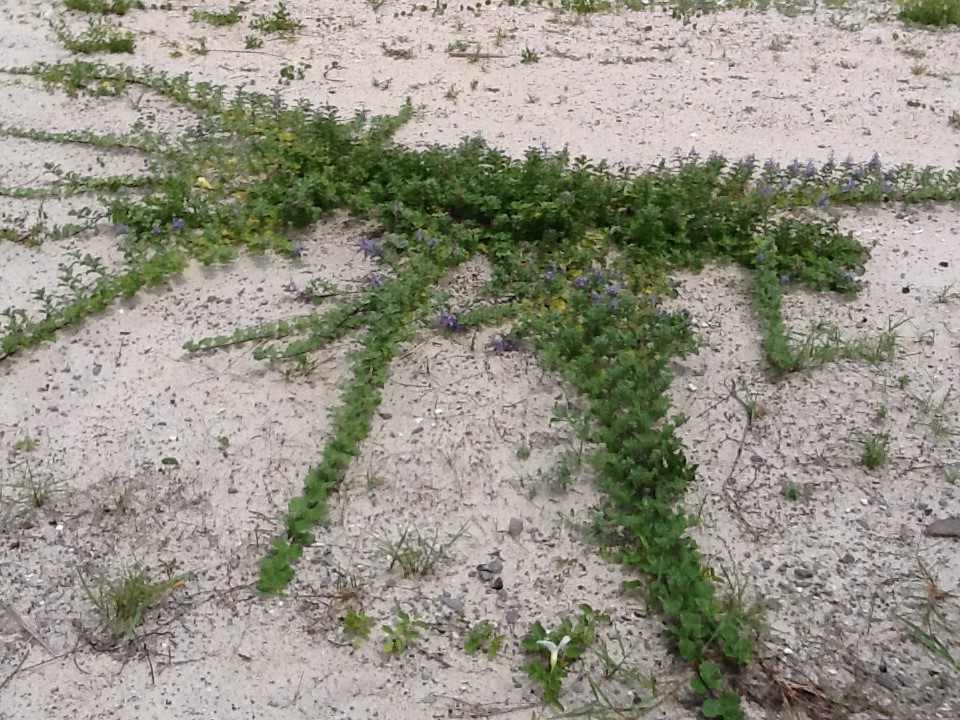
by Rick O'Connor | Jun 18, 2019
Yep,
We are still trying to remove this invasive plant from our area. For those who are not familiar with it, beach vitex (Vitex rotundifolia) is a category I invasive plant in Florida. It is current listed as “invasive, not recommended”. This means you can still purchase it but recommend you do not.
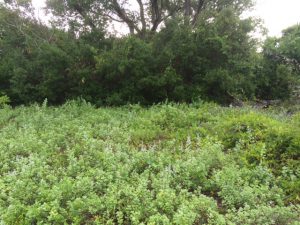
Vitex growing at Gulf Islands National Seashore that has been removed. Photo credit: Rick O’Connor
Why is that?
Well, being an invasive species, it reproduces at a high rate, has few consumers, and causes an environmental issue wherever it grows. It has the potential to cause economic issues as well. Beach vitex is from Asia and was brought to the United States as an ornamental plant. In upland landscapes, it does not seem to be a problem. However, when first used in coastal dunes it began to show its ugly head. Vitex begins as a low growing vine and becomes a shrub over time. It produced a beautiful lavender blossom in spring but then produces millions of seeds in late summer and fall. The seeds are spread by birds and are viable in seawater for several months. Dispersed in this way, the plant spreads across coastal beaches of our barrier islands.
Once established it forms a taproot with above ground rhizomes extending as far as 20 feet. It is allelopathic, meaning it produces chemical compounds that kill nearby plants and spreads to cover this new territory. This includes the common sea oat. Sea oats have a fibrous root system which are good at trapping sand and forming dunes. These dunes can protect properties during storm surge. Beach vitex, having a taproot system, are not as effective. Though we are not aware of any beach vitex growing on the fore dune in the panhandle, if it does it could impact sea turtle nesting. We are also not sure whether the local beach mice will eat these seeds. Thus, displacing sea oats could impact beach mice.
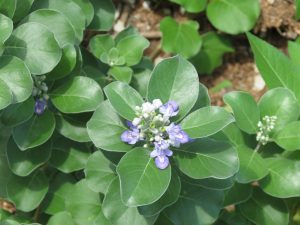
Beach Vitex Blossom. Photo credit: Rick O’Connor
We currently know of one site in Ft. Pickens, two properties in Gulf Breeze, two in Navarre, four on Perdido Key and Perdido Bay, 24 within Naval Live Oaks in Gulf Breeze, and 38 on Pensacola Beach; 70 properties total in the Pensacola Bay area. One of the properties in Gulf Breeze, and nine on Pensacola Beach (14%) have been removed or treated and have not returned. One property in Gulf Breeze, one in Ft. Pickens, two on Perdido Key and Perdido Bay, 20 on Pensacola Beach, and 24 in Naval Live Oaks (68%) have been removed or treated but have returned; re-treatments are required and are being conducted. And one property in Gulf Breeze, two in Navarre, two on Perdido Key or Perdido Bay, and nine on Pensacola Bay (20%) have not been removed or treated at all. In each of these cases, the plants are on private property. We hope that these property owners would consider removing the plant and replacing with native dune plants from this area.
Elsewhere in the panhandle we are aware of only two locations, one in Okaloosa County and one in Franklin. We believe the property in Okaloosa has been treated and are not sure of the status in Franklin. If is very possible that this plant is in the coastal areas of other counties in the panhandle.
Recently, volunteers from the Pensacola Beach Advocates and Americorp removed 315 m2 of beach vitex from public land on Pensacola Beach. That now means all beach vitex on public lands in Escambia County have been removed or treated. Research shows that repeated treatments may be required for up to five years to completely eradicate the plant from that property, but PBA and Americorp plan to assist Sea Grant with removing this plant from the area.
If you believe you have this plant and would like to learn how to manage it. Contact Rick O’Connor at the Escambia County Extension Office. (850) 475-5230 ext.111.
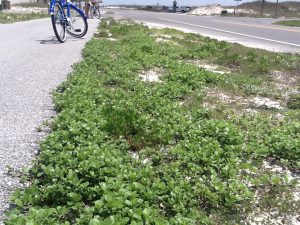
Vitex beginning to take over bike path on Pensacola Beach. Photo credit: Rick O’Connor
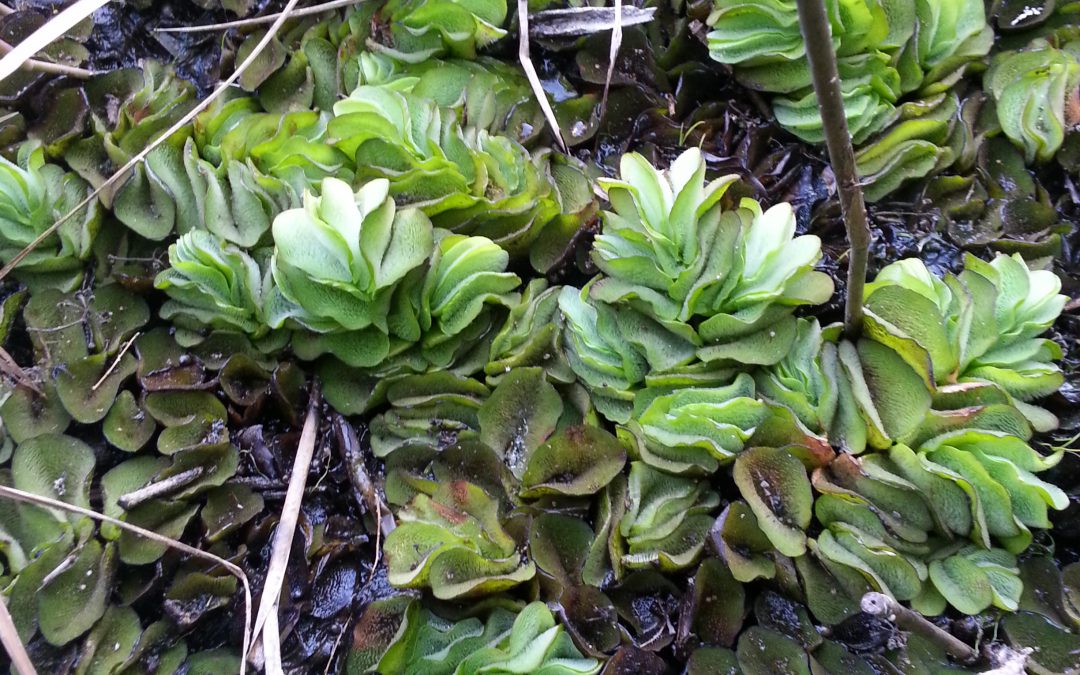
by Rick O'Connor | Mar 29, 2019
Giant Salvinia (Salvinia molesta) is an aggressively spreading free floating plant that can cover the surface of a water body reducing water flow, sunlight penetration, and dissolved oxygen to a point where the over health and biodiversity of the water body is compromised – we do not want it here.
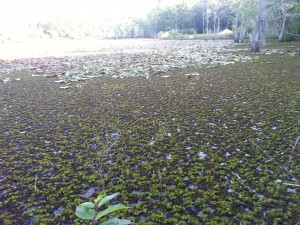
Giant Salvinia mats completely covering Bay County pond. This fast growing invasive can double in coverage every two weeks! Photo by L. Scott Jackson
The plant is originally from Brazil and was probably brought here for oriental ponds and aquariums. The plant is so aggressive and detrimental to waters it invades that in 2013 the International Union for the Conservation of Nature listed it as one of the world’s 100 worst invasive plants. Locally it is listed as a federal noxious weed and is prohibited in the state of Florida.
It has been found in Pensacola. We, along with Bay County, are the only two counties in the panhandle with the plant (that we know of). Something that is not so good. We would like to get rid of what we have and control the spread to other waterways and counties.
How do we do this?
Well, FWC has a team based out of Panama City that focuses on control and removals – they are on it. We know locally it has been found in the Jackson Lakes near Bayou Chico, and – even though it is a freshwater plant – has been found in the upper reaches of Bayou Chico itself. FWC is currently treating known locations but we need the help of shoreline residents controlling the plants that are in front of your property.
It is a floating plant, resembling duckweed but the leaves are larger (1-4” in length). The hairy looking roots hang in the water to gather nutrients. There bundles of small hair like structures on the surface of the curved leaves. Groups of four hairs rise vertically and touch at the tips (resembling an egg beater or wisp). They are very small, but with a magnifying glass you can see these. If found, you can use a hand-held crab net to dip them out of the water and place somewhere they can dry out and die. They spread quickly by fragmentation and spores. So be sure to collect all fragments of the plant.
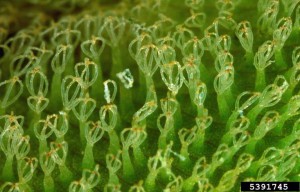
Photo by Barry Rice, sarracenia.com, Bugwood.org Rows of egg beater or light bulb shaped leaf hairs are a unique identifying characteristic of giant salvinia.
If you do find, please let us know here at the extension office so that we can report this to FWC.
You can also report the plant on https://www.eddmaps.org/.
You can learn more about this invasive plant at http://plants.ifas.ufl.edu/plant-directory/salvinia-molesta/.
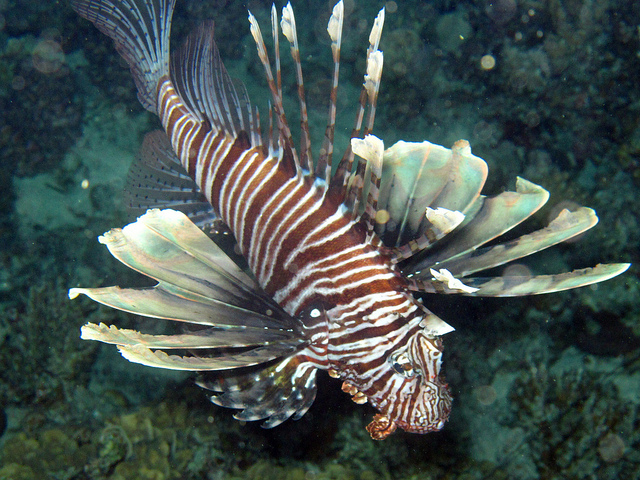
by Rick O'Connor | Mar 6, 2019
The vast majority of you reading this are aware of the lionfish, but for those who are not, this is a non-native invasive fish that has caused great concern within the economic and environmental communities. Lionfish were first reported in the waters off southeast Florida in the late 1980s. They dispersed north along the east coast of the state, over to Bermuda, throughout the Caribbean, and were first reported here in the northern Gulf of Mexico in 2010. It has been reported as the greatest invasion of an invasive species ever. In 2014, it was also reported that the highest densities of lionfish within the south Atlantic region were right here in the northern Gulf.
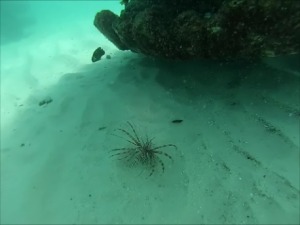
Lionfish at Pensacola Beach Snorkel Reef. Photo Credit: Robert Turpin
The creature is a voracious predator, consuming at least 70 species of small reef fish. For what ever reason, they prefer artificial reefs over natural ones and studies show that red snapper are further away, and higher above, artificial reefs that lionfish inhabit. All of this points to an economic and environmental problem with native fisheries in area waters.
So, what has been going on with lionfish in recent years?
What is the new science?
In 2018 Florida Fish and Wildlife Conservation Commission held its second statewide lionfish summit, and in 2019 Sea Grant held a panhandle regional lionfish workshop to get answers to these questions. There were sessions on recent research, impacts of the commercial harvest, and current regulations on harvesting the animals.
From the researchers we heard that the densities in the northern Gulf of Mexico have decreased over the last five years, at least in the shallow waters less than 120 feet. This is most probably due to the heavy harvest efforts from locals and from tournaments. They found that lionfish still prefer artificial over natural reefs but that their overall body condition on artificial reefs is poorer than those found on natural bottom. They have found evidence of some consumption of juvenile red snapper, but juvenile vermillion snapper have become a favorite. Another interesting discovery, they are feeding on other lionfish. Consumed lionfish are not as common as other species, but it is happening. They are also finding lionfish with ulcers on the skin. They are not sure of the cause, or whether this is impacting their population, but they will continue to study.
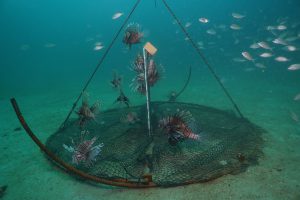
Deep water lionfish traps being tested by the University of Florida offshore Destin, FL. [ALEX FOGG/CONTRIBUTED PHOTO]
Can traps be found easily?
Will tethered buoys impact migrating species in the area?
Will the traps move between time of deployment and recovery?
How much by-catch will they harvest?
These are all concerns but there was some good news. Several different designs have been tried but one in particular, being studied by NOAA and the University of Florida, has had some success. The trap unfolds as hits the bottom, stays in the same location (even during recent storms), and only has about 10% by-catch – 90% of what it catches is lionfish. These traps are un-baited as well, using structure to attract them. However, these were not tethered to buoys (so there are questions there) and there is a larger issue… federal regulations.
Currently trapping for finfish in federal waters (9 miles out) is illegal in the Gulf of Mexico. Another issue is based on the Magnuson Act, all commercial harvest in federal waters needs to be sustainable. You cannot overharvest your target species, which is exactly what we want to do with lionfish. So, these regulatory hurdles will have to be dealt with before deep-water commercial harvest with traps could begin.
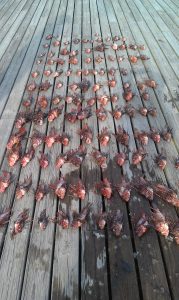
Harvested lionfish. Photo Credit: Bryan Clark
The current method of commercial harvest is with spearfishing SCUBA divers. The sale of salt water products license to do so soared between 2014 and 2016, but since there has been a declined. At the recent workshop the commercial harvesters and restaurants were there to discuss this problem.
First, the divers feel they need to be paid more in order to cover the cost of their harvest. This has become even harder in lieu of the decline in shallow, safe diving depth, waters. However, the restaurants feel the price needs to drop in order for them to offer the dish at a reasonable price to their customers. Most of the commercially harvested fish are currently going to markets outside the area where the current price is acceptable. The workshop suggested that this trend will probably continue and fewer harvesters will stay in the business. That said, the dive charters indicated they are making money taking charters out to specifically shoot lionfish for private consumption. This venture will probably increase.
So, after 10 years of lionfish in local waters, it appears that we have made a dent in their shallow water populations but must keep the pressure on. Several researchers indicated that frequent removals do make an impact, but infrequent does little – so the pressure needs to stay on. Deep water populations… we will have to see where the trap story goes.
If you have further questions on the current state of lionfish in our area, contact me at the Escambia County Extension Office. (850) 475-5230 ext. 111.
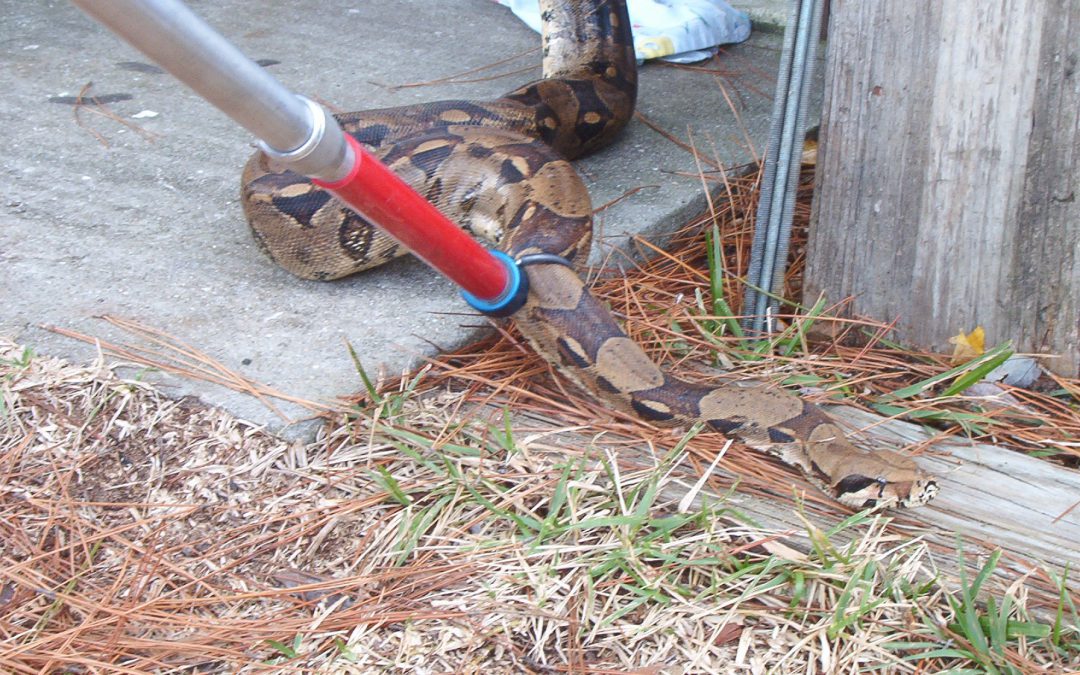
by Rick O'Connor | Mar 5, 2019
I am a pro and con guy.
When our family has a big decision to make, they usually ask me to list pros and cons before we make such a decision, it is something I have done since I can remember. It is not that different from the seven-year rule. When faced with a big decision, some native American cultures discuss how this decision will impact their families and the community seven years down the road.
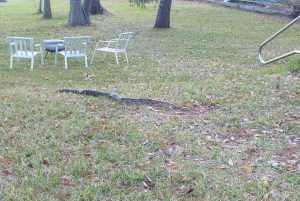
A large boa constrictor escaped in a neighborhood in Pensacola.
Photo Courtesy of Escambia County Animal Control
When I first saw the new Florida Fish and Wildlife Conservation Commission’s prohibited exotic species list, I thought of this pro-con / seven-year rule idea. For example, the Meerkat is on the list. A meerkat. Is this a good pet to start off with? Are they easy to maintain? To feed? Are they pets (as in… can you PET them)?
As I thought through my pro/con-seven-year idea, I thought not – but others obviously do. There are a lot of strange exotic pets in the United States and around the world. A species of turtle that I monitor is a pet trade target. The largest markets are China and the United States. I am guessing status is one reason why people chose pro over con. Maybe they do not think of the cons before making this decision, or maybe the pros are more important to them, so they are willing to overcome the cons – I am not sure.
Either way, FWC’s decision to prohibit this new list of species is not because they might make bad pets, rather it is their high risk of becoming invasive. Florida knows all too well how many of these exotic pets become problems in our local ecosystems. Lionfish, pythons, tegus to name a few. By definition, invasive species cause either environmental or economic problems for the communities where they become established – sometimes both. In 2014, the United States spent over 180 million dollars battling invasive species. We just completed our first statewide Weed Wrangle Event where volunteers went into the community and removed as many invasive plants as they could on a single day. The statewide numbers are not out yet, but locally the Six Rivers CISMA spent the morning removing Chinese Privet, Camphor trees, and Japanese Climbing Fern from a popular biking trail in a state park. And we all know, we will have to do it again.
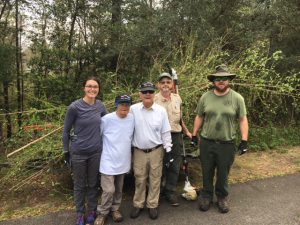
A group of volunteers from the Florida Park Service and Americorp helped to remove invasive plants during a recent Weed Wrangle event.
Photo: Rick O’Connor
Some say that spending time and money trying to control these invasive is a waste. Others know that not doing so could lead to a serious environmental or economic problem – so the weeds must be pulled, and the animals captured. All scientists and resource managers who deal with invasive species understand their best chance of eradicating them is when they FIRST appear on the scene – Early Detection, Rapid Response (EDRR). This is also the most cost-effective point in the invasion to work on them. However, most citizens do not know about certain invasive species until they are common in the landscape, and many times it is now too late for eradication – time to go into control mode.
One local species we hope we have begun working on soon enough to eradicate is Beach Vitex (Vitex rotundifolia). This plant is not that common statewide and is a potential target for eradication. Many along our barrier islands know of the plant now and, hopefully, will manage it on their property before it becomes widespread and problematic.
It was in this light that the FWC decided to approve a rule that would prohibit selected exotic animals as pets in Florida. These were considered high risk for becoming invasive if they were to escape or were released. This includes:
Mammals: Meerkats, Mongoose, Raccoon dogs, Dholes, Bushtail possums, and Flying foxes
Birds: Diochs, Red-whiskered Bul-Bul, Java sparrow, and Pink starling
Reptiles: Brown tree snake, Yellow anaconda, Beni anaconda, and Deschauensee’s anaconda
It is the hope that through this rule it will be harder to obtain these animals as pets and possible release into Florida’s landscapes. It is also a hope that people will reconsider having such creatures as pets in the first place. The pro-con / seven-year plan should be considered before buying any pet, particularly exotic ones.
To learn more about local invasive species and what you can do to help manage them on your property, you can visit the FWC page https://myfwc.com/wildlifehabitats/nonnatives/, or contact your county extension office.
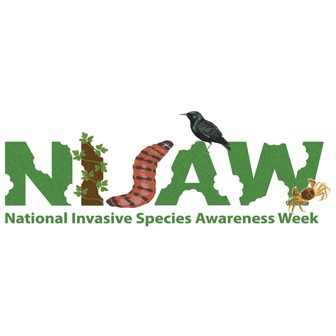
by Rick O'Connor | Feb 16, 2019
The last week of February is National Invasive Species Awareness Week (NISAW). Each year we post several articles about invasive species that are established in the panhandle, and those that are potential threats.
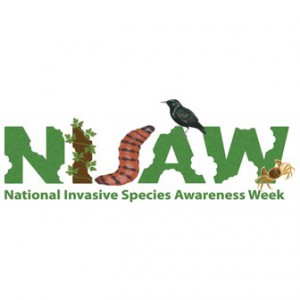
As most of you know, invasive species can be quite problematic. By definition, they are non-native creatures that arrived in Florida via human transportation. Whether intentional or non-intentional, their arrival has caused either an environmental problem, an economic one, or both. Research shows that the most effective method (both with eradication and cost) is detect and treat them early – what we call EDRR species (Early Detection Rapid Response). However, many of these invasives that “hover” just outside of our area do not make our radar until they have become established. It is at this time we begin to recognize their harmful impacts and demand action to battle them. In many cases, it is too late, and you find yourself in a management mode trying to keep the current population under control.
Though south Florida is ground zero for many invasive species problems, the panhandle is not without its issues. The articles will begin posting Feb 25 and run the rest of the week. For those in the Santa Rosa and Escambia County, we will end the week with an invasive species workday – the Weed Wrangle. For this years’ Weed Wrangle, we will be assisting the Florida state park service by removing the invasive Chinese Privet from the Blackwater Heritage Trail in Milton. The Weed Wrangle will be Mar 2 from 9:00 AM until 1:00 PM. We will meet at the Heritage Trail Visitors Center for a brief orientation and then begin to remove privet. The address is 5533 Alabama Street in Milton FL. You can park next to the library or the playground. Please wear closed toed shoes, bring gloves, loppers, and a water bottle.
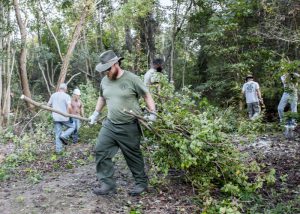
Members of the Six Rivers CISMA remove Chinese tallow from a city park in Pensacola.
Photo: Kristal Walsh.
Remember if you ever have questions concerning local invasive species, you can contact your county extension office for more information.




















